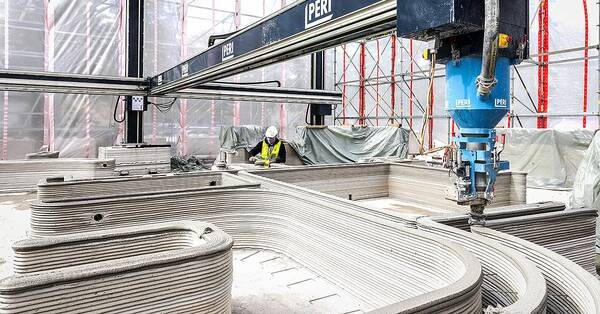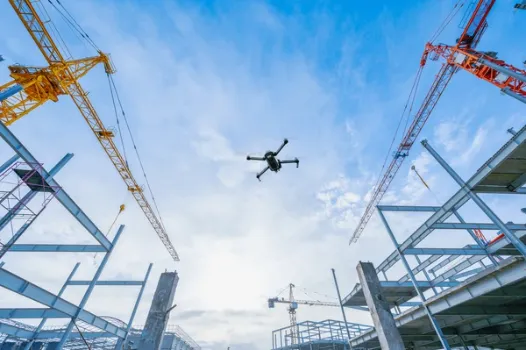
The Role of Automation in Reducing Construction's Carbon Footprint
The construction industry, a cornerstone of global development, has long been associated with significant environmental impacts. From material waste to energy consumption and carbon emissions, construction processes have left a sizable ecological footprint. In today's world, where sustainability is no longer just a buzzword but a necessity, the industry is under growing pressure to adopt greener practices. One powerful tool in this sustainability shift is automation. The integration of automated technologies into construction processes has the potential to not only improve project efficiency but also significantly reduce the industry's carbon footprint.
This article will explore how automated processes can minimize waste, reduce energy consumption, and lower carbon emissions in construction projects. We will also delve into real-life case studies that illustrate the tangible benefits of automation in reducing environmental impacts.
Understanding the Environmental Impact of Construction
Before diving into the role of automation, it's crucial to understand the environmental challenges posed by traditional construction methods. The construction sector is responsible for approximately 39% of global carbon emissions, according to the World Green Building Council. This is largely due to:

High Energy Consumption: Construction activities require substantial energy, from powering heavy machinery to heating and cooling buildings during the construction phase.
Material Waste: Inefficient use of materials leads to significant waste, often ending up in landfills and contributing to environmental degradation.
Carbon Emissions: The production and transportation of construction materials, along with on-site activities, generate considerable carbon emissions.
Water Usage: Construction projects often involve large-scale water use, leading to resource depletion and potential pollution.
These inefficiencies highlight the need for more sustainable approaches. Automation is emerging as a solution, offering the potential to streamline construction processes while making them more eco-friendly.
The Role of Automation in Construction
Automation in construction encompasses a wide range of technologies, from robotics and drones to artificial intelligence (AI) and Building Information Modeling (BIM). These technologies are revolutionizing the way construction projects are planned, executed, and managed, leading to increased efficiency and reduced environmental impact. Below, we explore key areas where automation is making a difference.
Minimizing Material Waste through Precision
One of the most significant ways automation can reduce construction's carbon footprint is by minimizing material waste. Traditional construction methods often involve a trial-and-error approach, leading to excess materials being ordered and wasted. Automation, particularly through BIM and 3D printing, allows for precise material calculations and custom fabrication.
BIM for Accurate Estimation: Building Information Modeling (BIM) is a digital representation of the physical and functional characteristics of a building. By using BIM, construction teams can accurately estimate the number of materials needed, reducing overordering and waste. Additionally, BIM allows for better coordination among different trades, minimizing rework and associated waste.
3D Printing for Custom Fabrication: 3D printing technology enables the production of custom components with minimal waste. Unlike traditional methods that involve cutting materials to size, 3D printing creates components layer by layer, using only the necessary amount of material. This not only reduces waste but also allows for the use of sustainable materials, further lowering the carbon footprint.

Reducing Energy Consumption with Smart Systems
Energy consumption is a major contributor to the carbon footprint of construction projects. Automation technologies can significantly reduce energy usage by optimizing processes and integrating smart systems.
Energy-Efficient Equipment: Automation allows for the use of energy-efficient machinery and equipment. For example, automated construction vehicles can be programmed to operate at optimal efficiency, reducing fuel consumption and emissions. Additionally, the use of electric and hybrid construction vehicles is becoming more common, further reducing the carbon footprint.
Smart Building Systems: Automation extends beyond the construction phase to the operation of buildings. Smart building systems, such as automated lighting, heating, and cooling, can significantly reduce energy consumption. These systems use sensors and AI to adjust settings based on occupancy and weather conditions, ensuring that energy is used efficiently.
Lowering Carbon Emissions through Streamlined Processes
Automation streamlines construction processes, reducing the time and resources needed to complete projects. This not only leads to cost savings but also reduces carbon emissions.
Automated Construction Scheduling: AI-powered scheduling tools can optimize the construction timeline, ensuring that tasks are completed in the most efficient order. This reduces idle time for machinery and workers, minimizing energy consumption and emissions. Additionally, automated scheduling can help avoid delays and rework, further reducing the carbon footprint.
Drones for Site Monitoring: Drones are increasingly being used for site monitoring and inspection. By providing real-time data, drones allow for more accurate planning and execution, reducing the need for on-site visits and associated emissions. Drones can also identify potential issues early, preventing costly and environmentally damaging rework.

Promoting Sustainable Practices with Automation
Automation not only reduces the carbon footprint of individual projects but also promotes sustainable practices across the industry. By integrating sustainability into automated processes, construction companies can lead the way in environmental stewardship.
Automated Sustainability Reporting: Many construction companies are now required to report on their environmental impact. Automation can simplify this process by collecting and analyzing data on energy use, emissions, and waste. Automated reporting ensures accuracy and consistency, helping companies meet regulatory requirements and demonstrate their commitment to sustainability.
Green Building Certification: Automation can also support the pursuit of green building certifications, such as LEED (Leadership in Energy and Environmental Design). Automated systems can monitor and document compliance with sustainability criteria, making it easier to achieve certification and enhance a building's environmental credentials.
Real-World Examples of Automation Reducing Carbon Footprint
Case Study: The Use of BIM and 3D Printing in a High-Rise Building Project

The "Skyline Tower," a major high-rise construction project in Europe, implemented Building Information Modeling (BIM) and 3D printing technologies to significantly reduce its environmental impact. The project team used BIM to create a detailed digital model of the building, allowing for accurate material estimation and coordination among different trades. By integrating 3D printing, the team was able to fabricate custom components on-site, reducing material waste and transportation emissions.
The results were significant:
Material Waste Reduction: The use of BIM and 3D printing reduced material waste by over 30%, preventing thousands of tons of waste from ending up in landfills.
Lower Emissions: The on-site fabrication of components reduced transportation needs, lowering the project's overall carbon emissions by 15%.
Energy Savings: The project also incorporated smart building systems, reducing energy consumption during both construction and operation.
Case Study: Automated Construction of a Sustainable Office Building

The "GreenWorks Office," a sustainable office building in North America, was constructed using a combination of automated scheduling, energy-efficient machinery, and intelligent building systems. The project aimed for LEED Platinum certification, the highest level of green building certification, and employed several automation technologies to streamline its processes and reduce its carbon footprint.
Key outcomes included:
Efficient Use of Resources: Automated scheduling and site monitoring reduced the construction timeline by 20%, leading to significant energy and cost savings.
Energy-Efficient Operation: The building's smart systems, including automated lighting and HVAC, reduced energy consumption by 40% compared to a traditional office building.
Sustainable Certification: The automation of sustainability reporting and monitoring helped the project achieve LEED Platinum certification, demonstrating its commitment to environmental responsibility.
Case Study: Drone Technology in Monitoring and Reducing Environmental Impact
.webp)
The "EcoLink Infrastructure" project in Asia used drone technology for site monitoring and environmental impact assessment. The drones provided real-time data on site conditions, allowing the project team to make informed decisions that minimized environmental impact.
The benefits were clear:
Reduced On-Site Visits: The use of drones reduced the need for on-site visits by project managers and inspectors, lowering transportation-related emissions by 25%.
Early Issue Detection: Drones identified potential environmental issues, such as soil erosion and water pollution, early in the project, allowing for timely mitigation and reducing the overall environmental impact.
Improved Efficiency: The real-time data provided by drones improved project efficiency, reducing energy consumption and associated carbon emissions.
Future Outlook: The Growing Role of Automation in Sustainable Construction
As the construction industry continues to evolve, the role of automation in reducing its carbon footprint will only grow. Emerging technologies, such as AI-driven design tools, advanced robotics, and sustainable materials, will further enhance the ability of construction companies to minimize their environmental impact.
Governments and industry bodies are also increasingly recognizing the importance of sustainability in construction. Regulations and incentives aimed at reducing carbon emissions are likely to drive further adoption of automation technologies. For construction companies, this presents an opportunity to not only comply with regulations but also differentiate themselves in a competitive market.
The integration of automation and sustainability will be key to the future of construction. By embracing these technologies, the industry can play a crucial role in combating climate change and building a more sustainable world.
Embracing Automation for a Greener Future
The construction industry's carbon footprint is a significant contributor to global greenhouse gas emissions. However, automation offers a powerful solution to reduce this impact. From minimizing material waste and optimizing energy use to streamlining processes and promoting sustainable practices, automation is transforming the way construction projects are carried out.
The case studies highlighted in this article demonstrate the tangible benefits of automation in reducing the carbon footprint of construction projects. As these technologies continue to advance, their potential to drive sustainability in the construction industry will only increase.
For construction companies looking to reduce their environmental impact and stay ahead in a rapidly changing industry, investing in automation is not just a smart business decision—it's a responsibility to the planet. By embracing automation, the construction industry can build a greener, more sustainable future for all.
Check https://app.bidlight.com for how BidLight can help you estimate your BIM model!